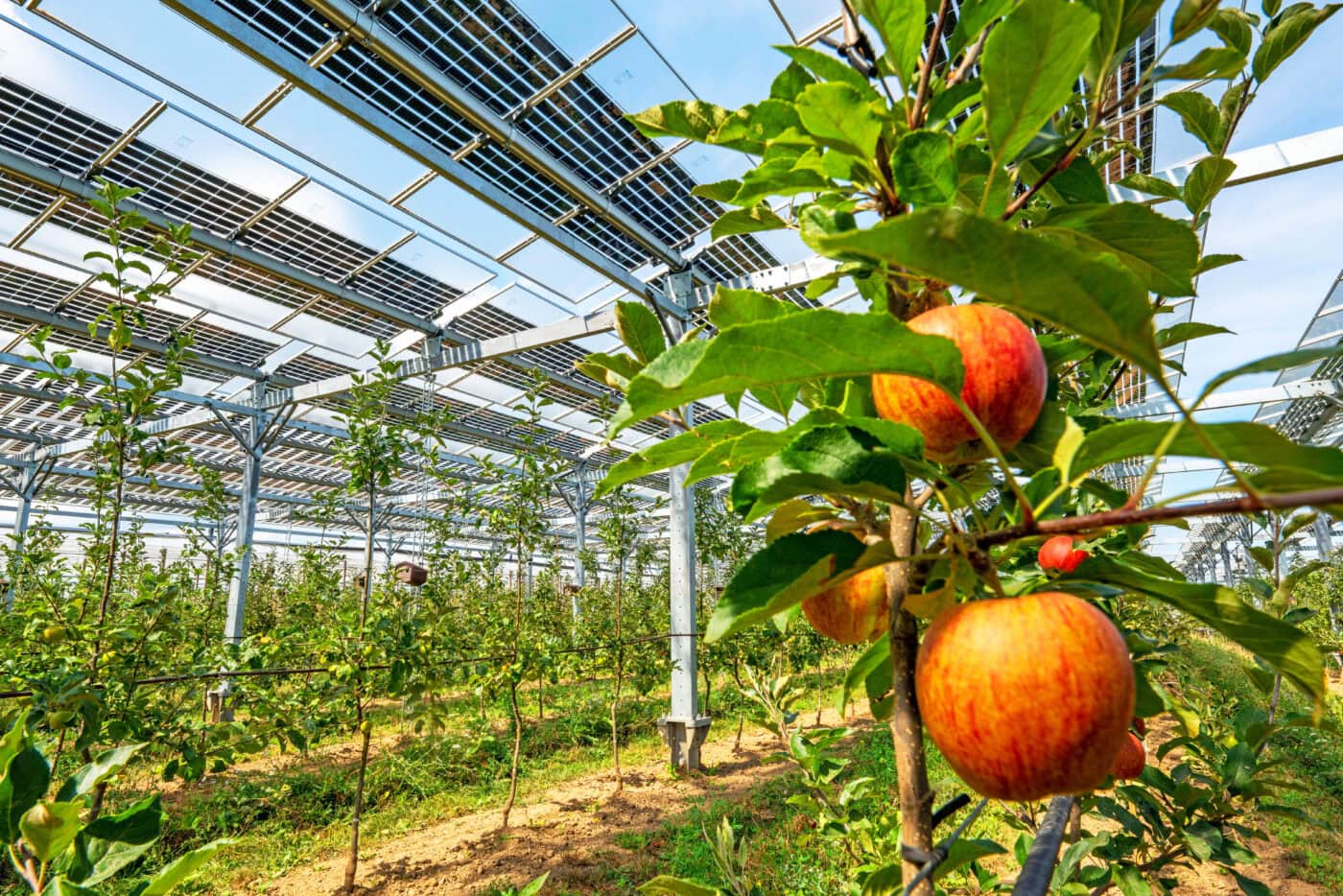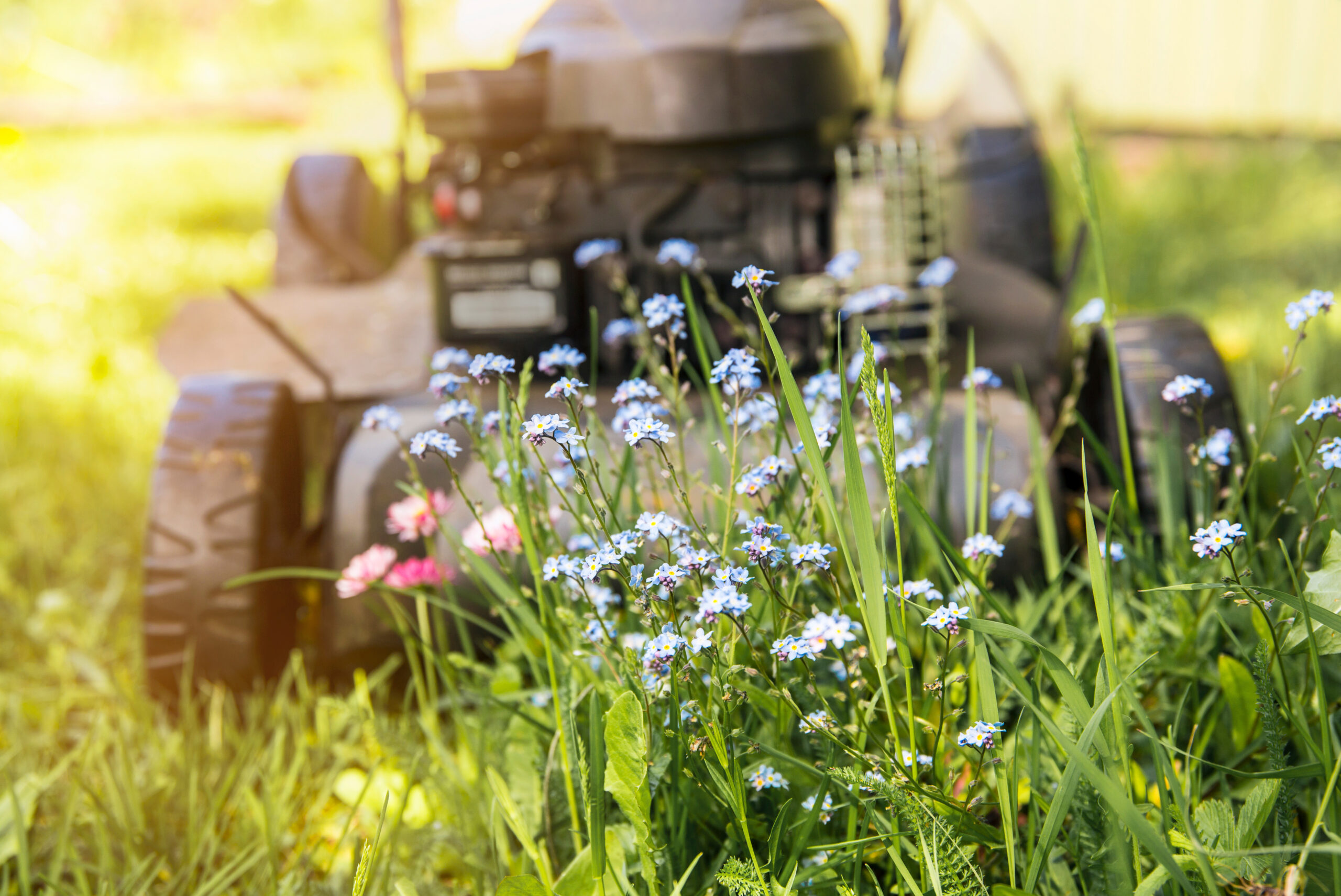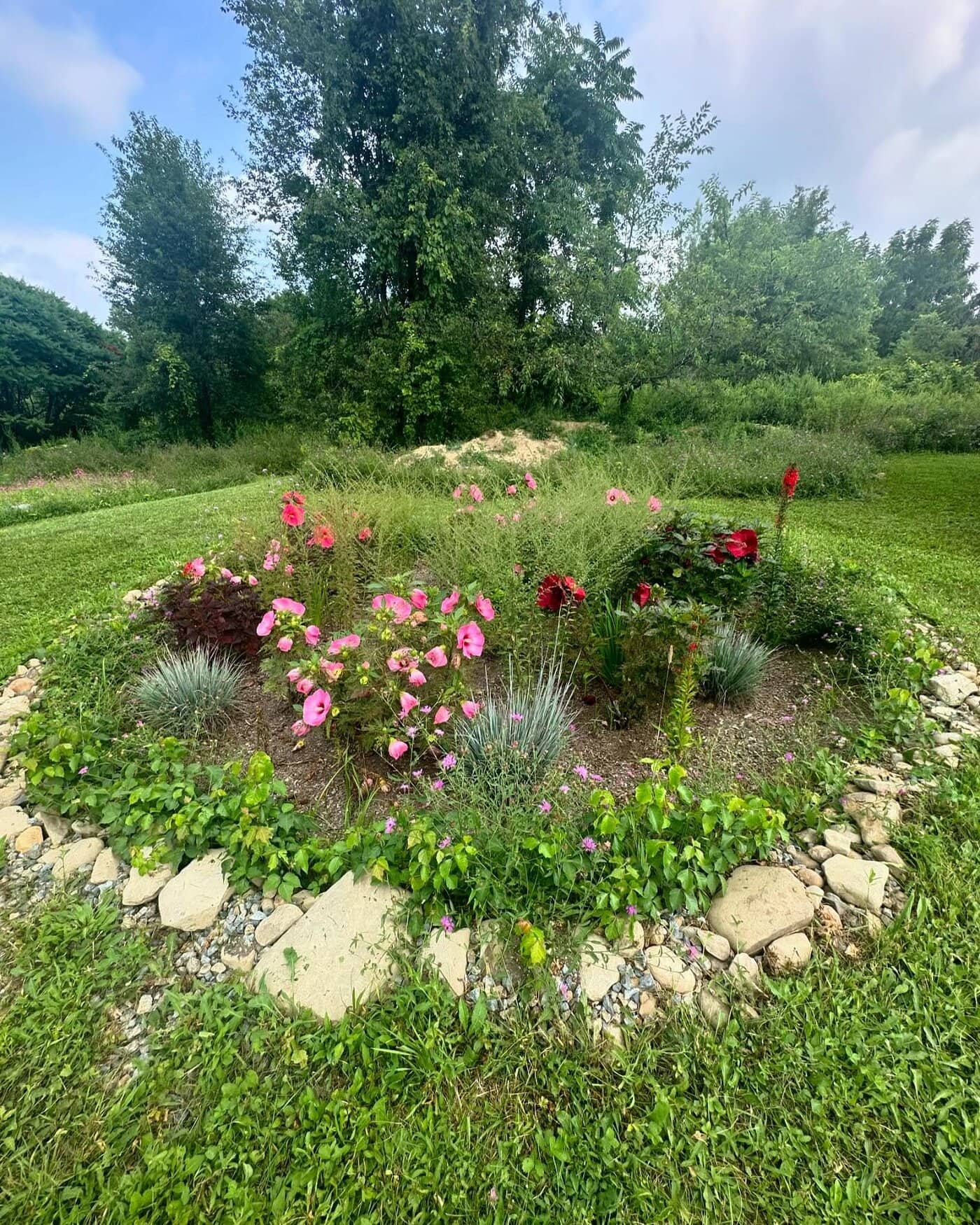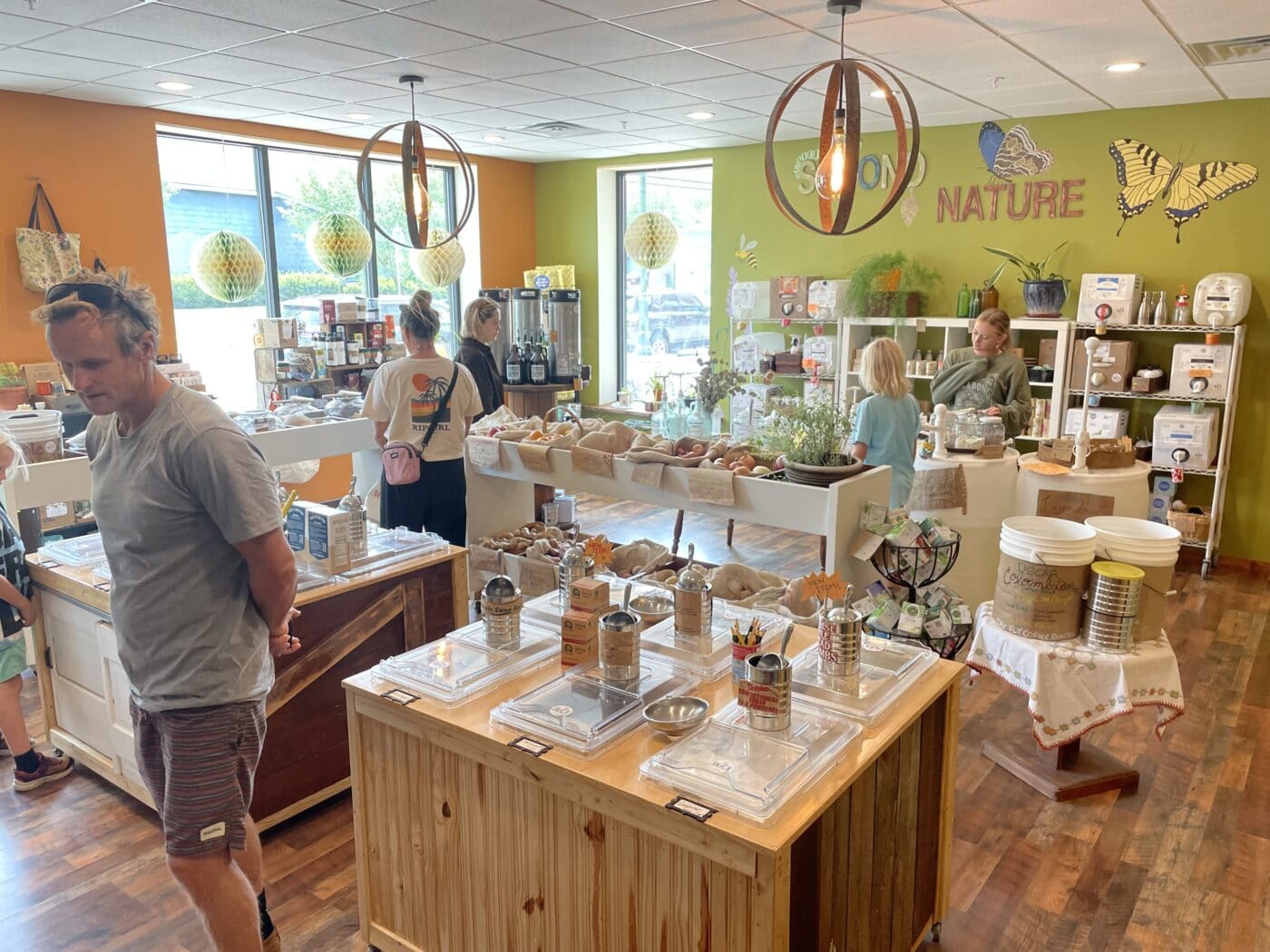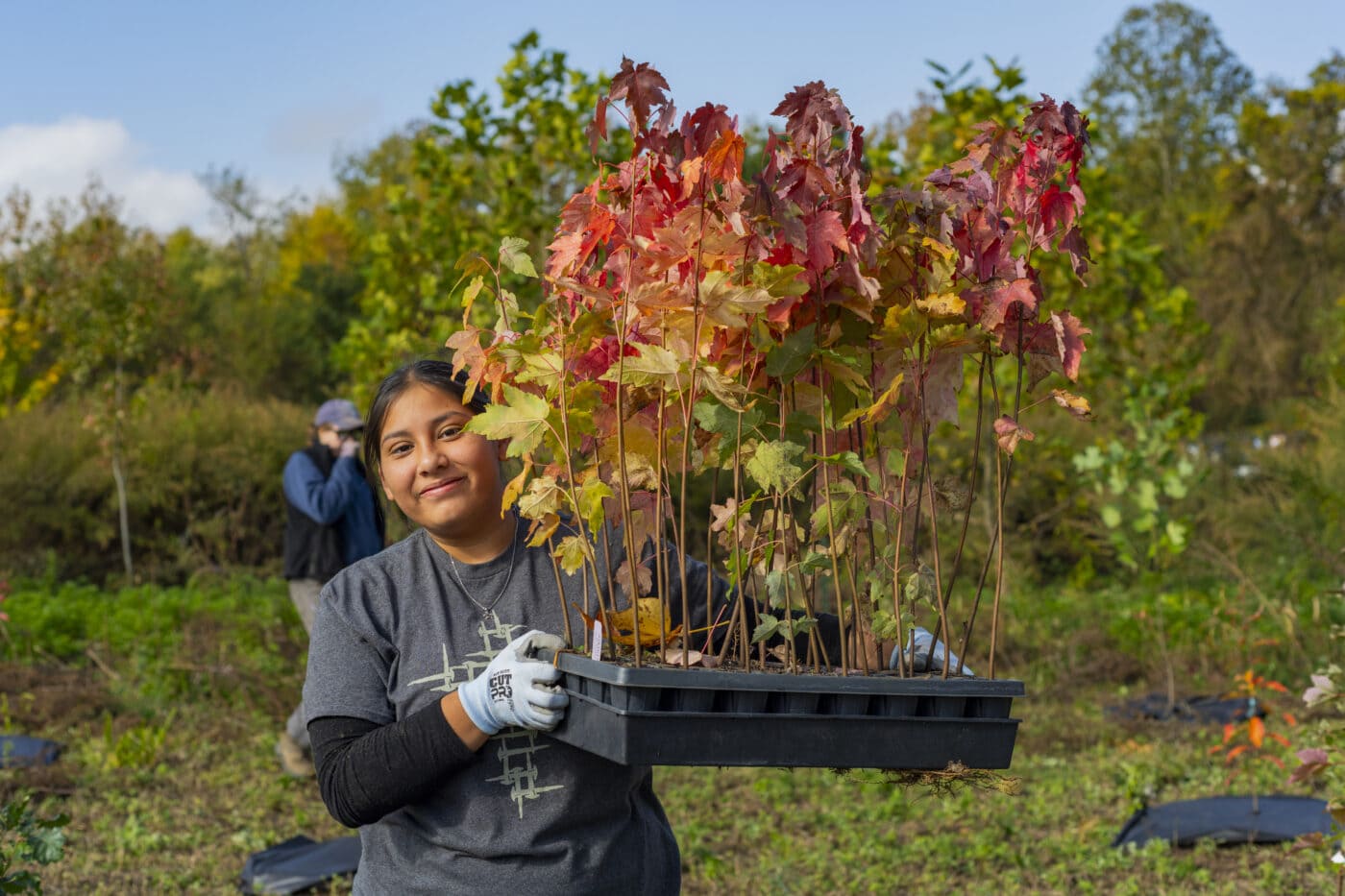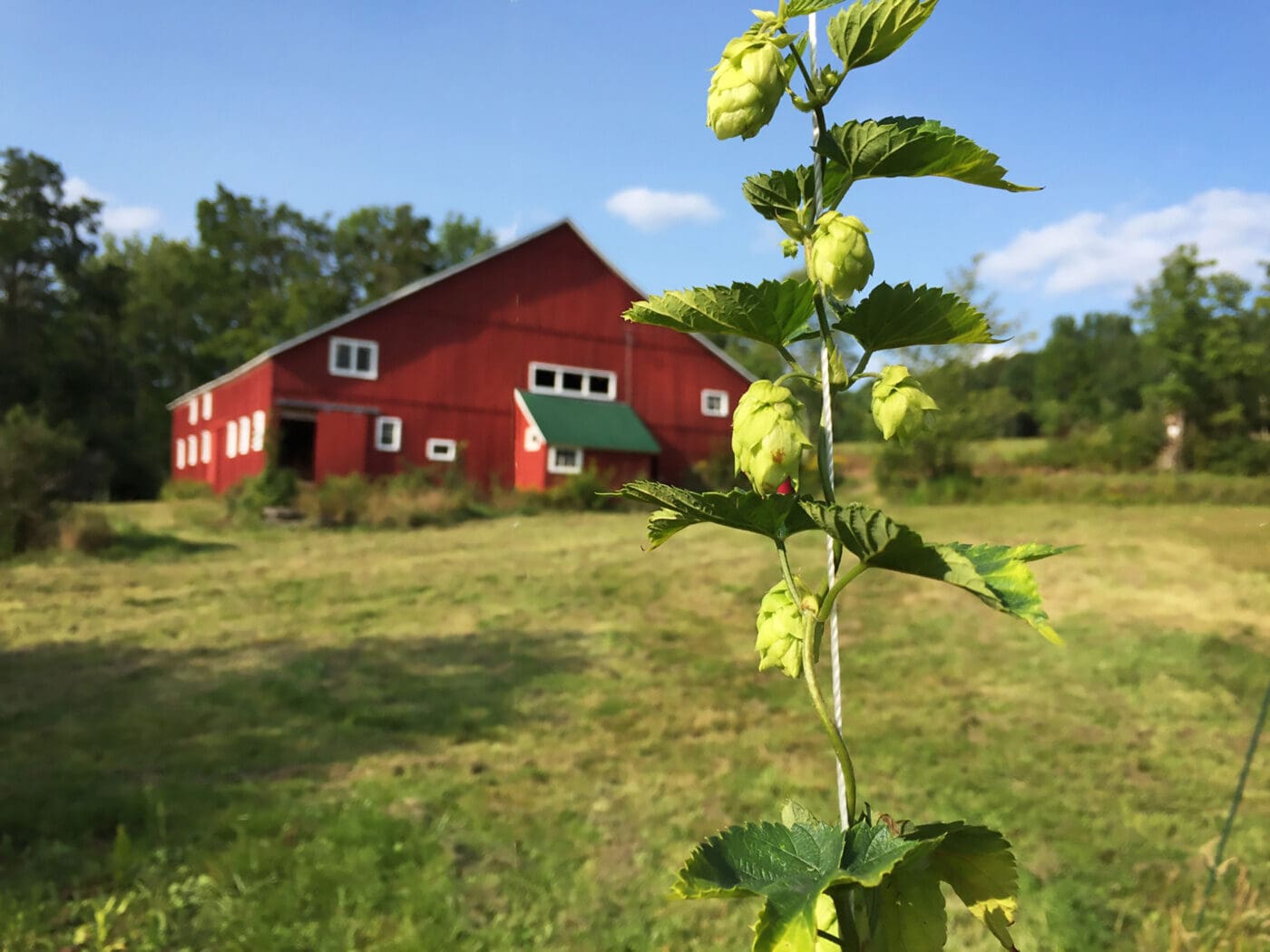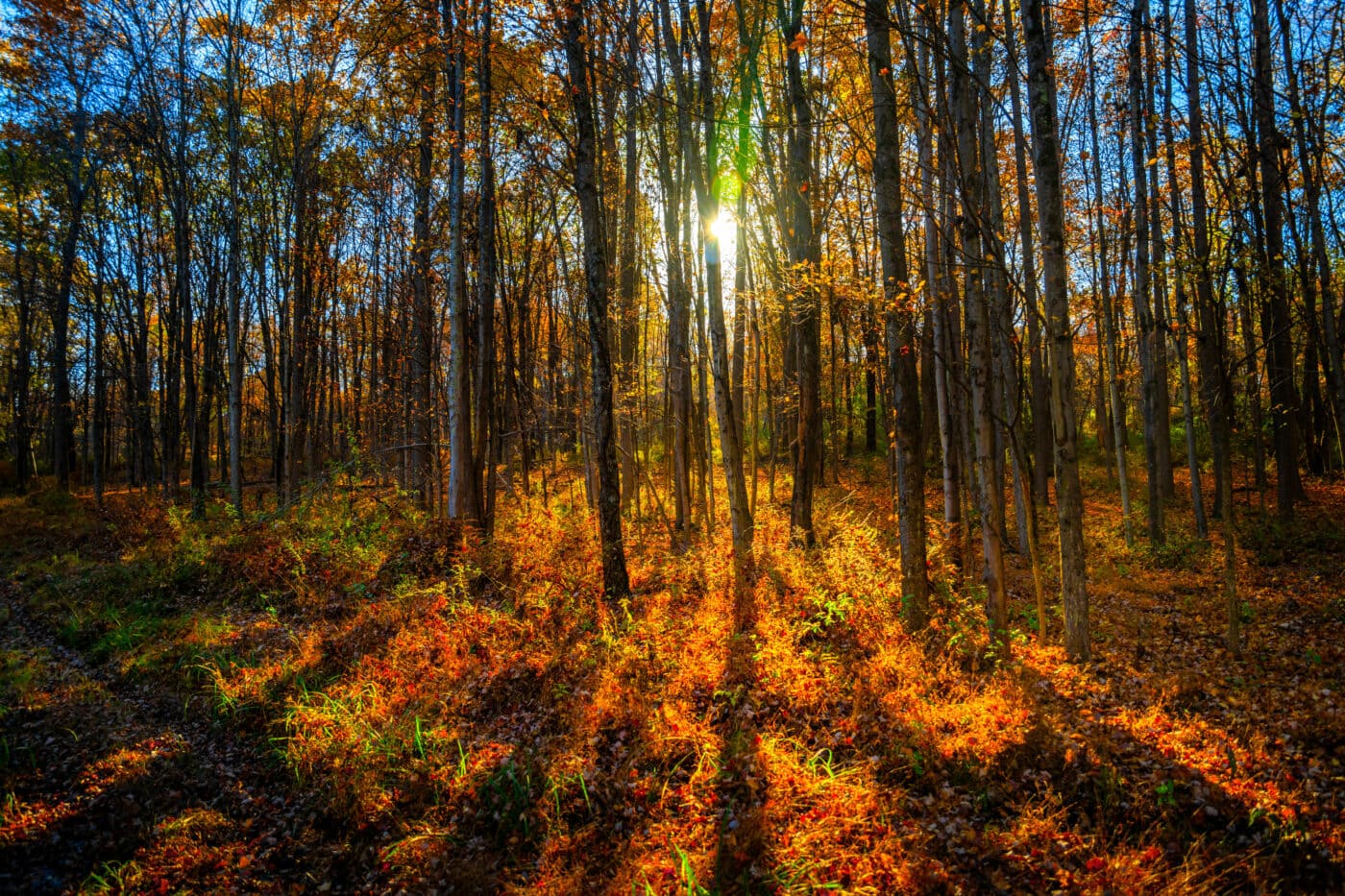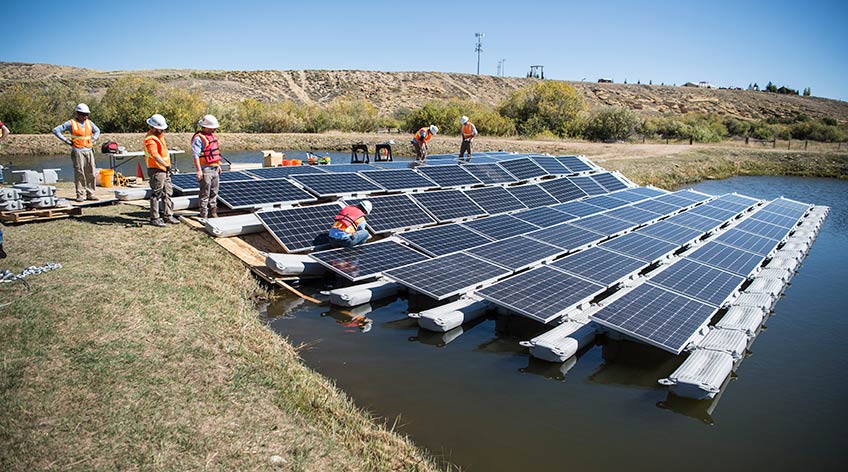Under a bright midmorning early-fall sun, Jared Buono points to a stand of apple trees beneath a flowing mesh shade cloth. These trees are tall — taller than the apple trees growing right alongside them, but not covered by the canopy. “You can see the difference, right?” Buono says while walking through rows of apple trees supported by trellises. “These trees have grown up under 40% shade, and as you can see, they’re more vigorous than the ones down there.”
Buono directs the Hudson Valley Research Laboratory in Highland, a hamlet in Ulster County. A partnership between local growers and Cornell AgriTech, the research lab helps farmers face weather challenges, such as the uptick in extreme weather caused by climate change, by conducting solutions research.
Much of this research is done in a low-slung building on U.S. Route 9W, but the lab is also home to a 25-acre experimental orchard up the road, on a hilltop with a sweeping view of the surrounding countryside. Here Buono has been studying the impact of shade on 300 Fuji apple trees for the past two and a half years.
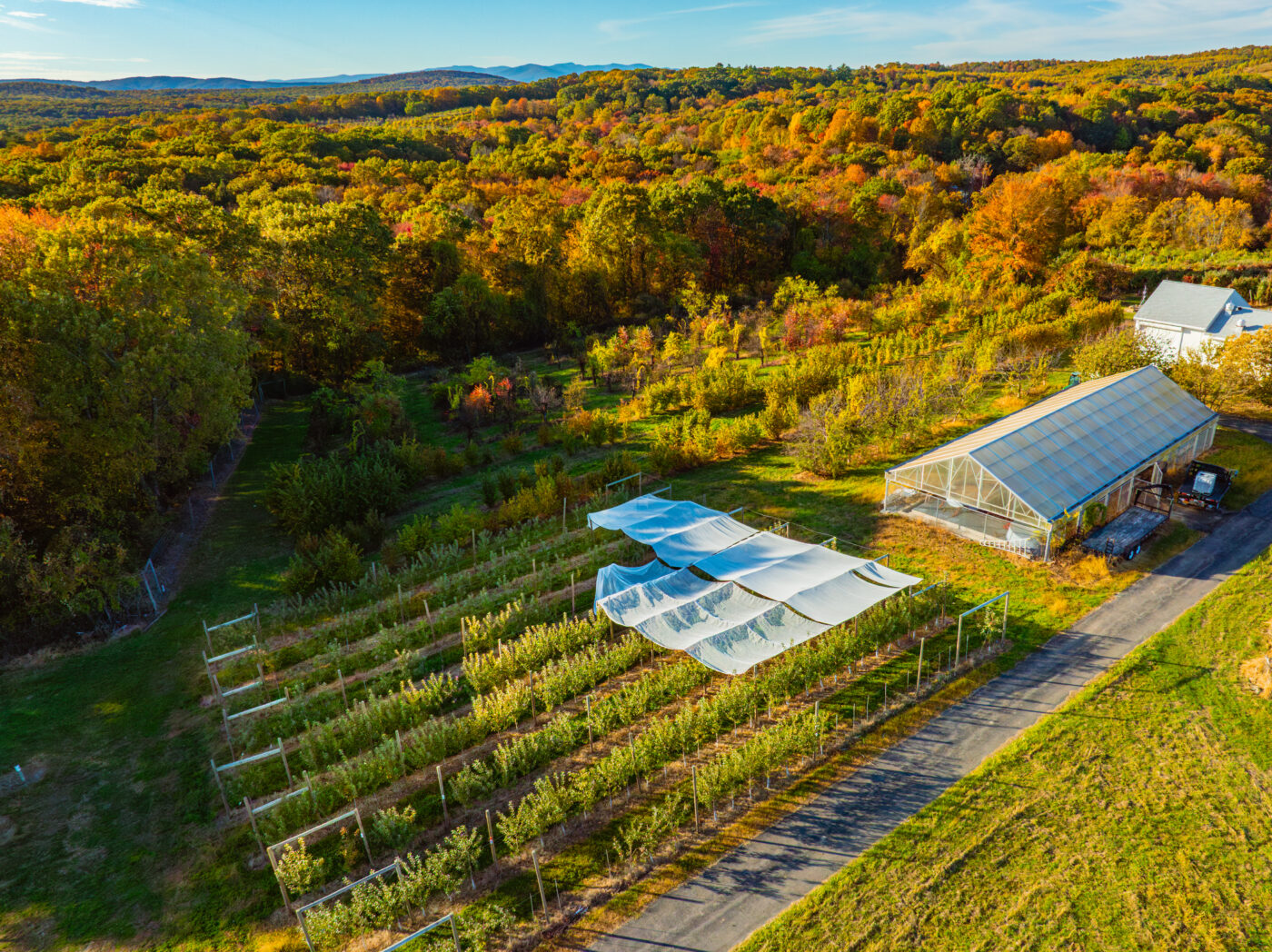
His project is part of a broader effort to understand how agrivoltaics (a special term for using land for solar power production and agriculture at the same time) can benefit farmers while also boosting the state’s renewable energy. Solar panels are also being installed and tested where various fruits are grown in select climates elsewhere, from pear orchards in Germany to cherry orchards in France to citron groves in Italy.
The shade cloth used in Buono’s study simulates solar panel conditions locally, and it’s given Buono a glimpse of how real solar panels might affect apples, the Hudson Valley’s biggest value crop. If solar panels can generate power while also increasing fruit yield, that’s a double win.
Now a new, more technologically sophisticated agrivoltaics study is in the works. In late 2026, the Hudson Valley Research Laboratory plans to break ground on a 300-kilowatt solar array that will cover roughly 800 apple trees. These panels will be approximately 10 feet high and have single-axis moving trackers.
“If we want to track the sun, we can do that, but if we want to do what’s called anti-tracking, we can turn the panels away from the sun and let that light down on the ground,” Buono says. “You can go from an almost covered system to only 10% shade during the day by anti-tracking. The tradeoff is you’re not producing as much power, but you’re producing food.”
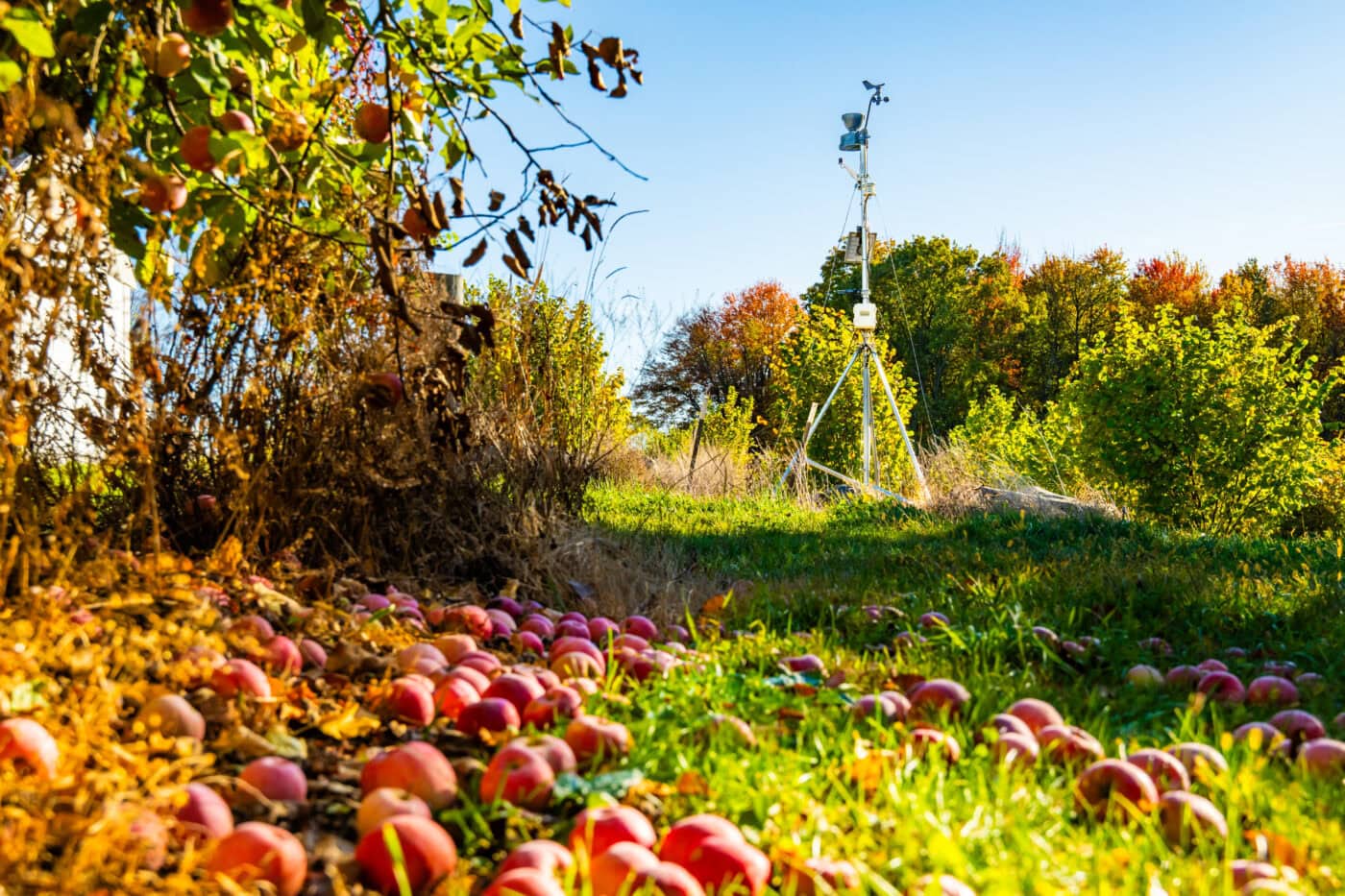
Apples can sunburn — they fare better with some shade to protect them from excessive heat. Research has shown that many crops benefit from up to 15% shade, and that the yield of berries, fruit, and fruity vegetables increases with up to 30% of shade, according to Buono. His Fuji apple study uses two different shade cloths: mesh that blocks 40% of the sun, and mesh that blocks 20%.
Ideally, the new agrivoltaic study will generate a wealth of information to guide agrivoltaic decision-making in the Empire State. The study will also look at horticultural applications such as protection from hail, frost, and excessive heat.
Agrivoltaics “will be another tool in the toolbox,” Buono says. “Growers will be able to say, ‘We got a lot of moisture on the trees today. Let’s open those panels up and let the sunlight in,’ or ‘Our trees are very stressed, no matter how much water we get to them — let’s close them up.'”
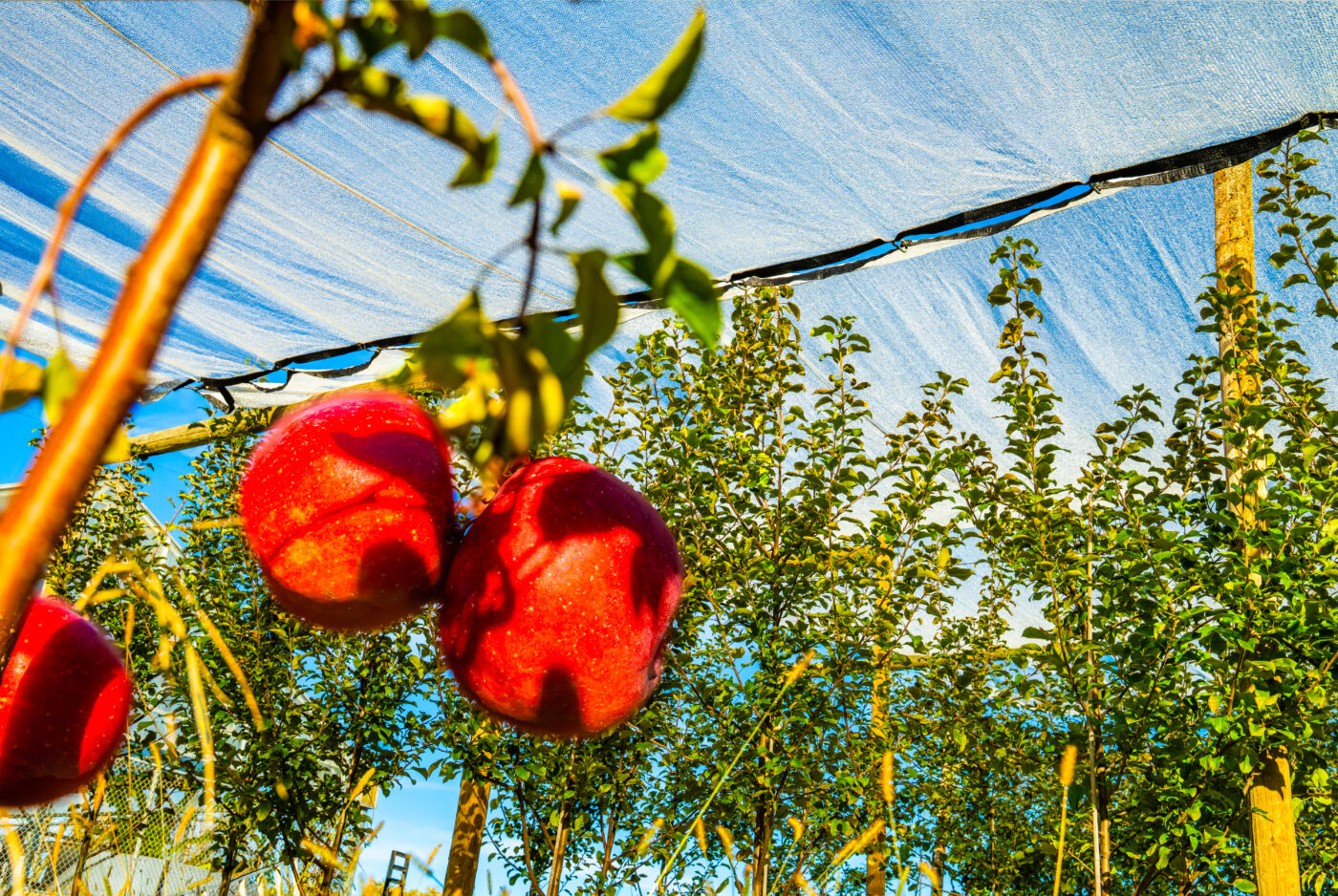
Linda Garrett, New York & New Jersey Regional Director for the American Farmland Trust, says agrivoltaics has the potential to help farmers diversify their income streams, keep farmland in production, and protect crops from weather-related damage. “AFT is looking at agrivoltaics as farmer-first,” Garrett says. “These projects should really be considering how to integrate solar into the agriculture operations so it’s working for the farmer and it’s not an afterthought. If it’s done right, agrivoltaics can be a huge farm viability tool.”
Agrivoltaics might also help younger and newer farmers access affordable land — one of the biggest challenges in farming. In some states, like Massachusetts, there are incentives for agrivoltaics, but to receive them, the developer must guarantee farmers use the land. “They might have the land, they might have the project, but they need to get the farmer,” Garrett says.
Garrett said she’s excited about Buono’s agrivoltaics project. “Farmers like to be able to see how things are working,” she says. “They want to know the economics. They also want to be able to talk to other farmers who are doing it, to ask questions. They want to learn from each other. That’s who they trust, and so I think having more examples of agrivoltaics across the state is going to really move the needle.”
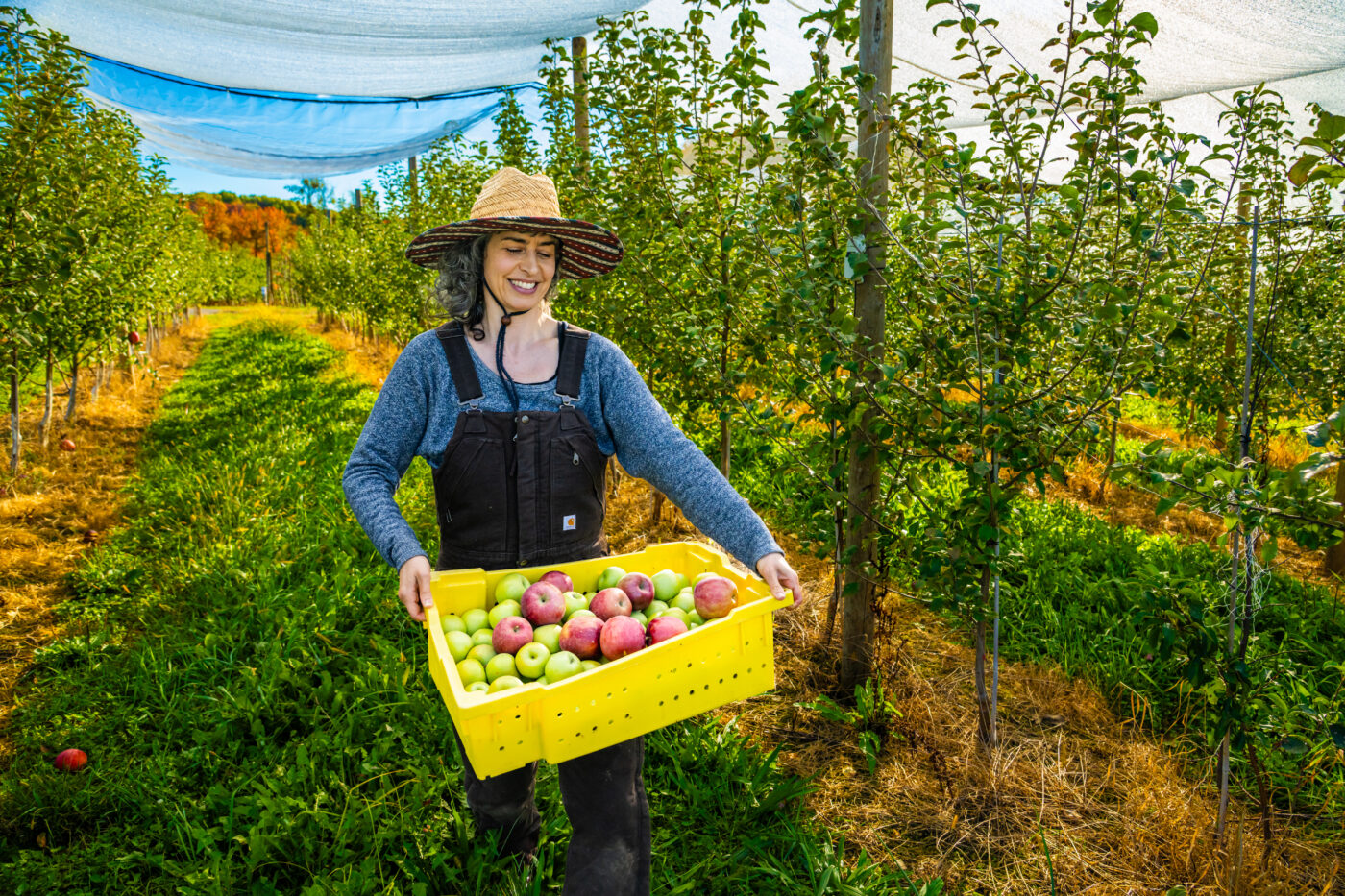
Another large array will be built in Ithaca, where Cornell University is based, and will focus on vegetables and field crops.
Climate change is making life harder for farmers — and farming has never been especially easier. In the Hudson Valley, farms are seeing more extreme weather — hail, tornadoes, and more drought, as well as the reemergence of pests such as the woolly apple aphid. Growers want apple varieties and planting systems that can better withstand these threats to their crops.
The Hudson Valley is the perfect place for growing apples, Buono says. The rolling hills facilitate air drainage, draining away cool air and reducing the damage caused by early frosts. The largest market in the U.S., New York City, is close and accessible. “Making that [high-]quality, finished fruit — that’s what you need to do in the Hudson Valley,” Buono says. New York is the second-highest-producing apple state in the country.
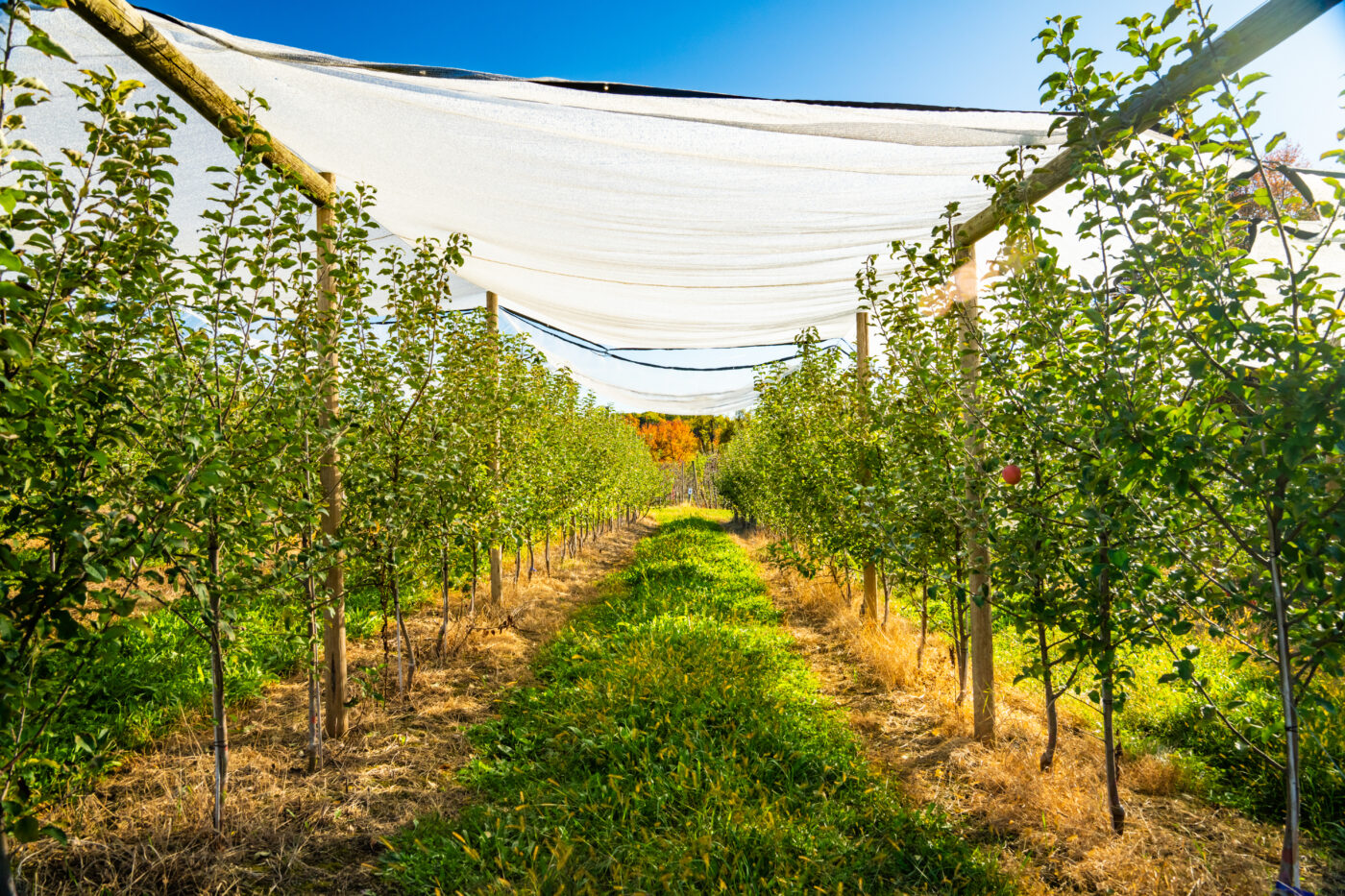
Today’s growers plant high-density apple orchards that are more productive and easier to manage for pests and diseases, but also more labor-intensive, with smaller rooting systems that require irrigation. Dry weather can present a big challenge, as can unseasonably warm weather that causes trees to “wake up” too early. “Three years ago, we had droughts, and growers were struggling to find enough water to keep things going,” Buono recalls.
Developing disease-resistant and cold-hardy trees has always been a priority, but “it’s becoming more urgent,” Buono says. “We’ve got to do everything we can to maintain a resilient food system and vibrant agriculture. Research is critical to that.”
A lot of agrivoltaics projects have focused on sheep, which can graze around the arrays. These arrays use fixed-tilt systems, which don’t move with the sun. But Buono and others think the benefits of agrivoltaics go well beyond sheep farming.
New York has ambitious renewable energy goals. Agrivoltaics could help the state meet them. Through the Climate Leadership and Community Protection Act, signed into law in 2019, the state aims to reduce greenhouse gas emissions by 40% by 2030 and then by 85% by 2050 compared to 1990 levels.


